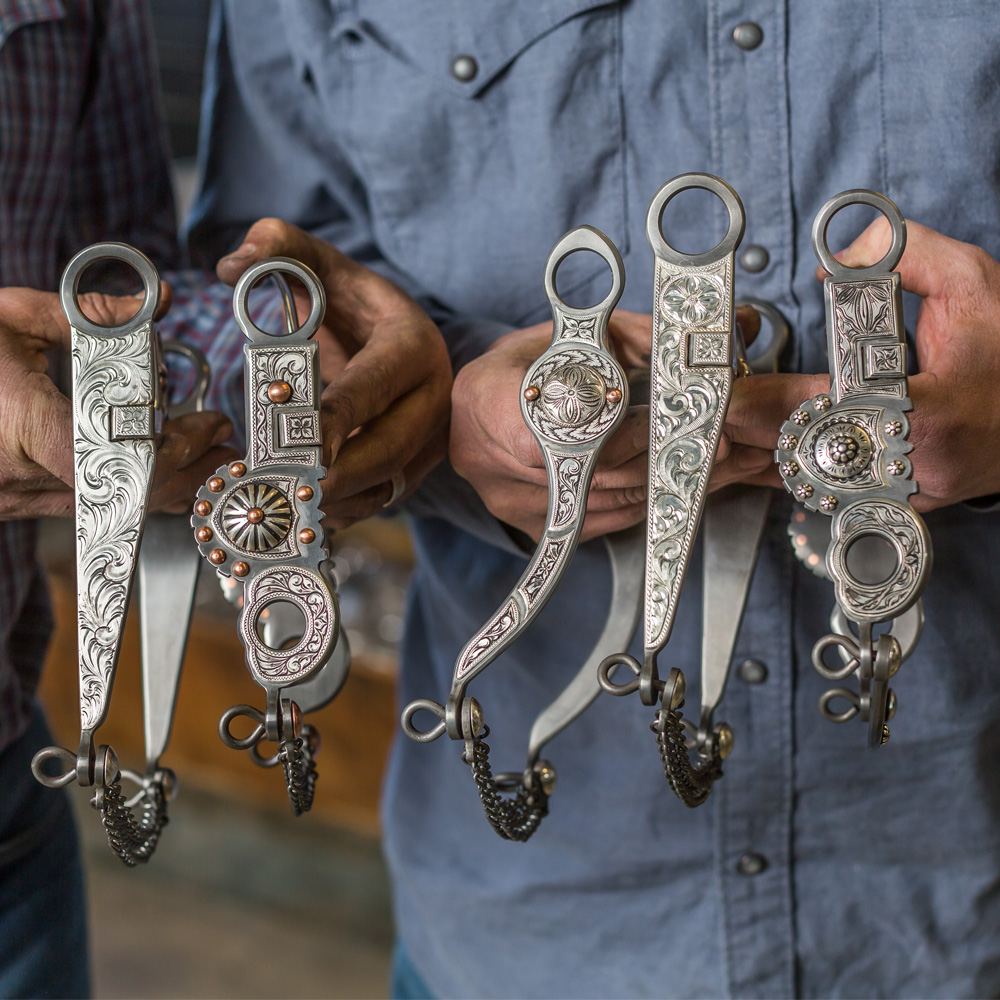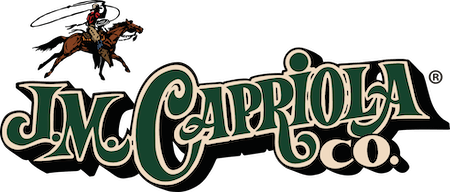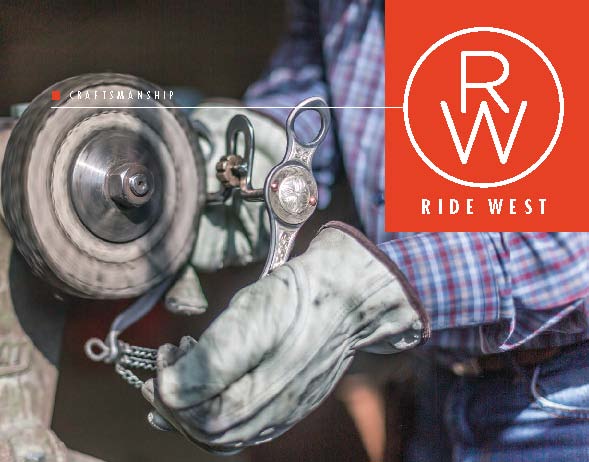J.M. Capriola Company launches a new bit line based on the original designs of G.S. Garcia, but with refinements to fit modern horses and horsemen.
STORY BY JENNIFER DENISON
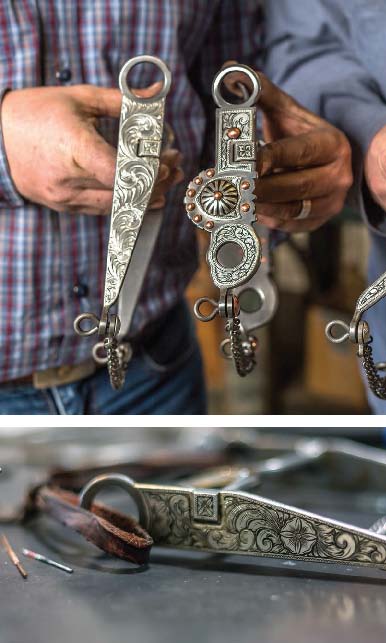
In the late 1800s and early 1900s, saddlemaker G.S. Garcia knew that each fall, when cowboys, vaqueros and buckaroos received their wages, he could count on them to buy saddles and other gear in his shop in Santa Margarita, California, and later in Elko, Nevada. Today, John and Susan Wright, owners of J.M. Capriola Company in Elko, have the same loyal clientele, but recently they’ve noticed a resurgence of horsemen coming into their shop around payday to see what’s new in the glass bit case.
Last fall, the Wrights introduced a new line of bits hand made by John Wright and Southern California bit and spurmaker Jon Peters. The Garcia Made in the USA bit line features more than a dozen cheekpieces that can be customized with a variety of mouthpieces, silver inlays and overlays, and brightcut or antique finishes. The designs are based on original, timeless Garcia patterns with functional and artistic twists added by Wright and Peters to fit today’s horses and horsemen. They also have included some of their own designs requested and tested by reputable cowboy and buckaroo horsemen.
Since 1978, J.M. Capriola Company, aka “Capriola’s,” has been the exclusive retailer and owner of Garcia Bit & Spur Company. Then-owners Paula Wright and her brothers purchased the rights to Garcia’s patterns and equipment from his son, Les Garcia. The Garcia-Capriola connection goes back much further, however. Joseph Martin Capriola, who opened Capriola’s in 1924, was a Garcia saddlemaking protégé. He sold some of his mentor’s bits and spurs in his shop, which was just a few doors down from G.S. Garcia Harness and Saddle Shop.
Paul and Betty Bear, Paula’s parents, purchased Capriola’s in 1958 and continued to cater to the working cowboy, vaquero and buckaroo like their predecessors. Paula and her husband, Doug Wright, and their son, John, took over the business in the 1980s. In 2014, Doug retired a couple of years after Paula passed in a horse accident, and John and Susan bought the business. They continue J.M. Capriola’s motto of being “Guardians of Tradition,” but just like Garcia, they also have a vision for the future and are striving to find innovations in their business and gear that appeal to today’s horses and horsemen.
“J.M. Capriola’s has always stocked Garcia bits,” says Susan, who is instrumental in the business and marketing side of the company. “It is partly due to his heritage in Elko, but also because the Bears had a close relationship with the Garcia family for many years.”
“G.S. GARCIA WAS AN INNOVATOR AND VISIONARY, AND WE KEPT ASKING OURSELVES, ‘WHAT WOULD GARCIA DO?'”
SUSAN WRIGHT
For several years, the Wrights had admired Peters’ artistry and craftsmanship, and bought one of his early bits at the Brannaman Pro-Am Vaquero Roping about five years ago. That purchase
led to a close friendship and daily phone conversations.
During the COVID 19 pandemic, the Wrights continued to run their business, but it also gave them a chance to look toward the future.
“When COVID shut down Nevada it was branding season and we still needed to provide gear to working cowboys, buckaroos and ranchers,” recalls Susan. “It gave us an opportunity to reflect on our vision for the future and what we can do to enable our business to maintain its longevity for the next generation. G.S. Garcia was an innovator and visionary, and we kept asking ourselves, “What would Garcia do?'”
One of their ideas was to bring the bitmaking back “in house.” Over several decades after Garcia’s death in 1933, there was a transition period where Garcia Bits &Spurs were made in California, Reno, Nevada, and periodically in Mexico. Having control of the bitmaking again would better enable the Wrights to oversee their products to meet their standards of functionality and quality in an era where imitations are common.
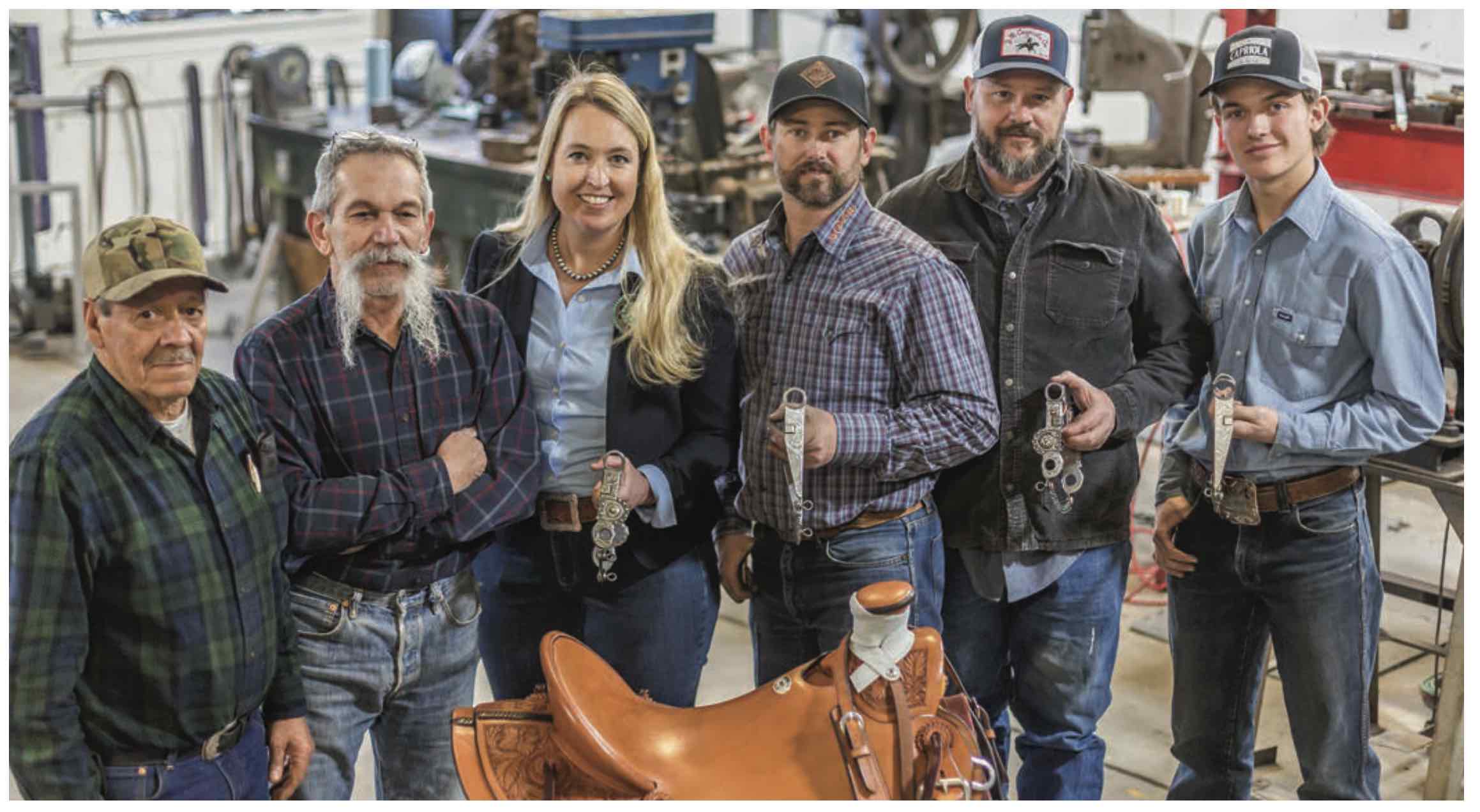
John had long helped with the leatherwork in the shop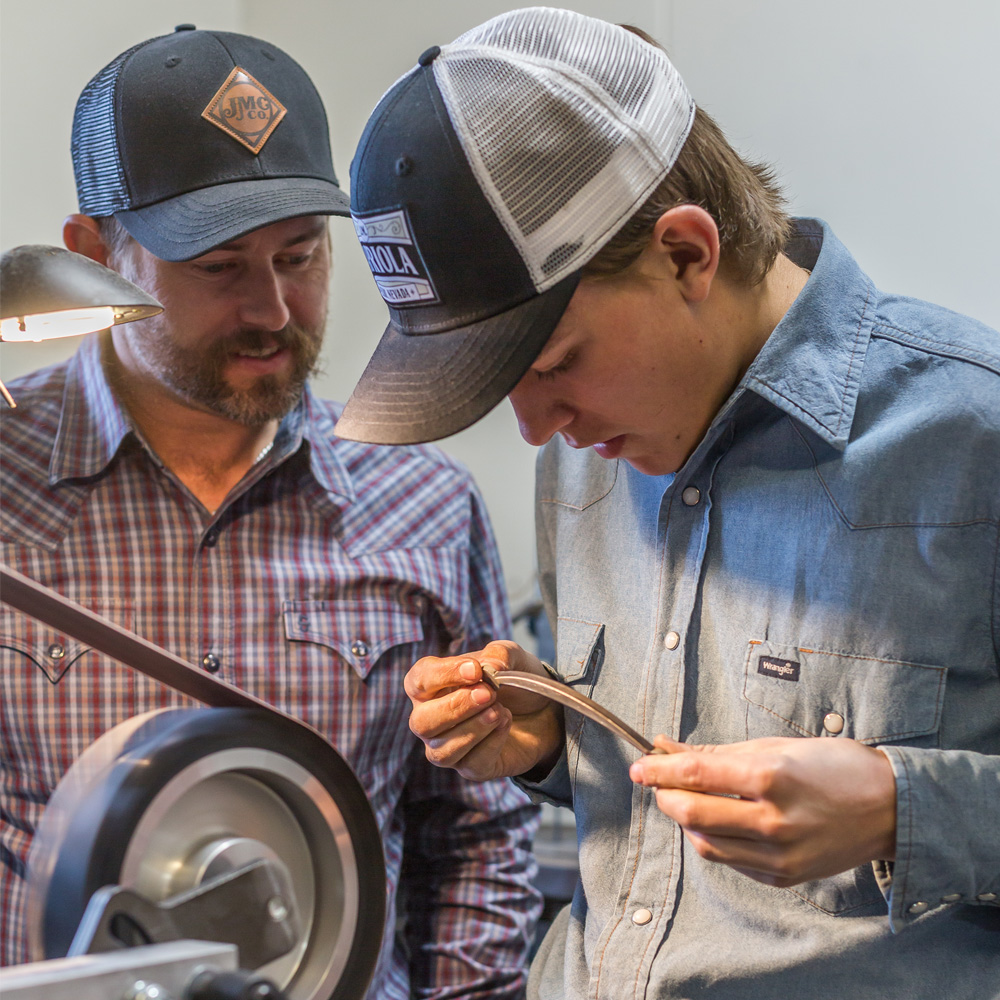 , and with the encouragement of his mother, Paula, before her passing, he had started doing silverwork after taking classes at GRS in Emporia, Kansas, with Diane Scalese and Jeremiah Watt and his daughter, Nevada. Yet he still needed some help learning bit fabrication. His teenaged son, Charlie, also expressed interest in the process.
, and with the encouragement of his mother, Paula, before her passing, he had started doing silverwork after taking classes at GRS in Emporia, Kansas, with Diane Scalese and Jeremiah Watt and his daughter, Nevada. Yet he still needed some help learning bit fabrication. His teenaged son, Charlie, also expressed interest in the process.
“I’ve been soldering for only about three years, and Charlie has been by my side the whole time and is intrigued by it,” John says. “It spurred me to want to learn more about fabrication and perfect my skills so I can pass them down to him. Our daughter, Audrey, enjoys the leatherwork and building purses; Charlie wants to do silverwork. If we’re going to keep interest in the business, we must bring our kids into it and keep them involved and bring it full circle.”
With the Garcia dyes, patterns and equipment at their disposal, as well as buckets of blank cheekpieces, the Wrights developed an annual bitmaking contest a few years ago to showcase emerging and established bitmakers. The makers send in an entry fee and receive two blanks to engrave and use to create their own custom bits. In January, the bits are displayed at the Cowboy Arts & Gear Museum in Elko, judged and then sold at auction in a fundraiser to benefit the museum. Peters had entered and won the contest multiple times and became the maker to beat.
A self taught maker, Peters started building bits and spurs about seven years ago. He grew up working for ranches and feed stores, and he had an interest in horses, horsemanship and gear. Later in life, he learned about the vaquero and buckaroos and their unique gear. “It just spoke to me,” he says. “The craftsmanship that went into the bits and the skill it took to build them by hand drew me in. “I’d always worked with my hands and enjoyed art, so I started doing leatherwork. Then I wanted to make my own silver for my leatherwork and it snowballed into building bits and spurs,” Peters continues. “Bits are my favorite to make; they require a different level of engineering and attention to detail to make them functional and artistic.”
As he began his career as a maker with the support of his wife, Rose, and their children, Peters sought help from master leathercrafter and bit and spurmaker Jeremiah Watt, who he says “helped flatten the learning curve.” Peters’ natural talent and artistic ability quickly drew the attention of horsemen and collectors alike, and he was able to leave the daily grind of his full time facilities management job at the University of California San Diego and dedicate his time to his craftsmanship.
Capriola’s has always supported traditional gear makers, so collaborating with Peters on the bit line was a natural fit. 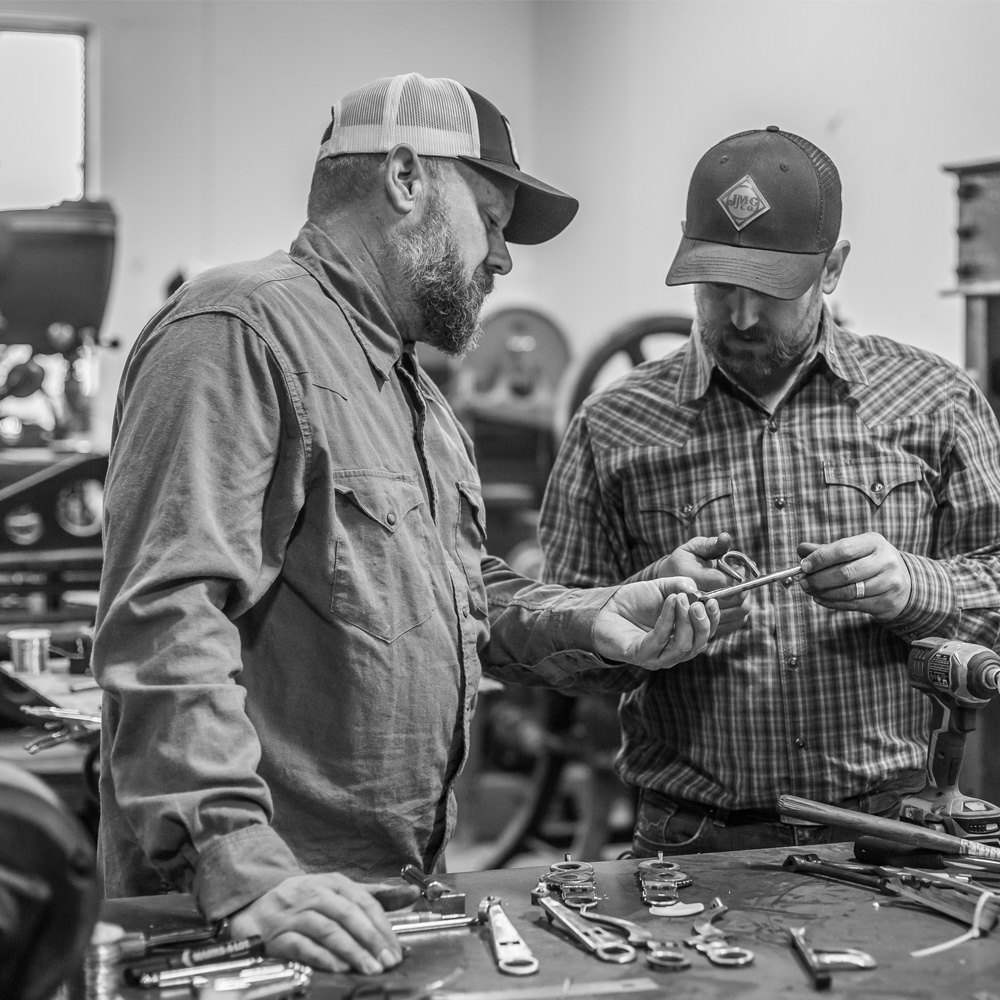
“The idea evolved organically through our daily conversations, and last fall we finalized our plans,” John says. “The [Wrangler National Finals Rodeo] was coming up and we needed to build up our inventory of bits, so Jon started fabricating and we both engraved them. We debuted some of the bits at the Pro-Am in October and everyone wanted to buy them. We were sold out by the end of the NFR.”
The refined craftsmanship of the bits and their artistic qualities appeal to horsemen, but the story behind them also creates interest.
“We’re not going to do the same pattern over and over,” John says. “I want every bit to be ornate and have its own look. Jon and I start with a blank canvas and have the artistic freedom to do what we want on it. I think people want to know the story behind the bits and that only two people are making the bits.”
Last winter, Peters traveled to Elko and spent a few days at Capriola’s getting the fabrication equipment set up and giving John and Charlie crash courses in the process. Anthony Pedrini, the son of master Capriola’s saddlemaker Pedro Pedrini, also observed the process.
“I was looking at an old photo of Garcia saddlemakers and I turned around and saw John, Jon, Charlie and Anthony all standing around the same equipment that was in the photograph from 1948, and it gave me chills,” says Susan. “It’s all timeless.”
With the bit collection in full swing, both John and Peters are melding their fabrication and engraving skills, but also adding their own personal touches to the one of a kind bits.
“The bits are finished in a French gray, rather than the blue [patina],” says Peters. “I think it is the most traditional and elegant look, and it shows off the silver and engraving the best. In Garcia’s day they weren’t coloring bits.”
The bits are stamped on the inside cheekpieces with both bit makers’ marks, as well as the Garcia Elko, Nevada, mark. Each bit is also numbered. This will streamline record keeping and help authenticate the real models from the imitations.

Susan, who has gradually worked in her own innovative ways to modernize a business that is more than a century old and increase its marketing and reach, says the favorable feedback on the bits indicates the line is worth the investment.
“It was a big investment and decision for us,” she says. “But in the grand scheme of things we always went back to what we think Garcia would’ve done. He, as well as Paula, would be thrilled to see all of this and that our kids, just like theirs, are getting involved in the business and will hopefully continue it into the future.”
“THE CRAFTSMANSHIP THAT WENT INTO THE BITS AND THE SKILL IT TOOK TO BUILD THEM BY HAND DREW ME IN.”
JON PETERS
TIMELINE
1882: G.S. Garcia, at 18 years old, opens his own saddle shop in Santa Margarita, California, after apprenticing with Homobono Arana at Arana Saddle Shop in San Luis Obispo, California.
1893: After the death of their infant son, Garcia and his wife, Maria Saturnina, move to Elko, Nevada, to start a new life and opens G.S. Garcia Harness and Saddle Shop. Garcia’s first catalog.
1897: Garcia prints his first of many catalogs of chaps, bits and spurs made in his shop.
1898: Garcia hires Alsalio Herrera to build bits and spurs, and mentor other young craftsmen Garcia hired. Herrera oversaw the silver department for 17 years. For several years, the Wrights had admired Peters’ artistry and craftsmanship, and bought one of his early bits at the Brannaman ProAm Vaquero Roping about five years ago. That purchase led to a close friendship and daily phone conversations.
1903: Garcia hires engraver Susie McConnell. It was rare at that time to find female craftsman, let alone hire them. By 1904, Garcia employed 20 people.
1907: Joseph Martin Capriola, who would later open his own saddle shop in Elko, completes his saddlemaking apprenticeship with Garcia. After working on ranches for 17 years, he returned to Elko in 1924 and opened his own saddle shop, J.M. Capriola Company, just a few doors down from Garcia’s shop. He bought bits and spurs from Garcia to sell.
1933: Garcia dies at age 69. His wife, Saturnina, and some of their children continued the shop. Sons Les did the silver work, Henry made saddles and leather goods, and Eddie managed the bookkeeping. Garcia’s first catalog
1939: The Garcias close the Elko shop and the family moves to Salinas, California, and opens another thriving shop.
1957: Henry Garcia buys his brother Les out of Garcia Saddlery Company and opens a second store in San Luis Obispo, California, coming full circle with the shop. Les retired in Reno, but soon started his own company, Les Garcia Manufacturing Company, with silver workers in both Reno and Mexico.
1958: Paul and Betty Bear buy J.M. Capriola Company. Their children—Paula, Bill
and Bob—worked at the store just as the
Garcia children and Capriola’s son had.
1965: Henry closes Garcia Saddle Company.
1972: Paul and Betty Bear sell J.M. Capriola Company to their children.
1975: J.M. Capriola Company publishes its first catalog and starts setting up trade show booths at events, such as the National Reined Cow Horse Association Snaffle Bit Futurity in Reno, Nevada, to expand their customer base. At their first show, their booth was located beside Les Garcia, which started a longstanding friendship.
1978: Les Garcia sells his business and the Garcia line of bits and spurs to Paula Bear Wright and her brothers.
1985: Paula Bear Wright and her husband, Doug Wright, purchase all interest in J. M. Capriola Company. Their son, John, grew up rodeoing, working in the store and doing leather work.
2012: Paula passes away, leaving Doug and John to run the business.
2014: John and his wife, Susan, purchase J.M. Capriola Company. The couple, with their children, Charlie and Audrey, continue to be “Guardians of Tradition” established by the Garcias and handed down through the Capriolas and Bears.
2021: Jon Peters comes on board as Capriola’s bit- and spurmaker with John Wright, and the duo creates a new line of Garcia-inspired bits and spurs made in the United States.
Shop Garcia USA Bits and Spurs
